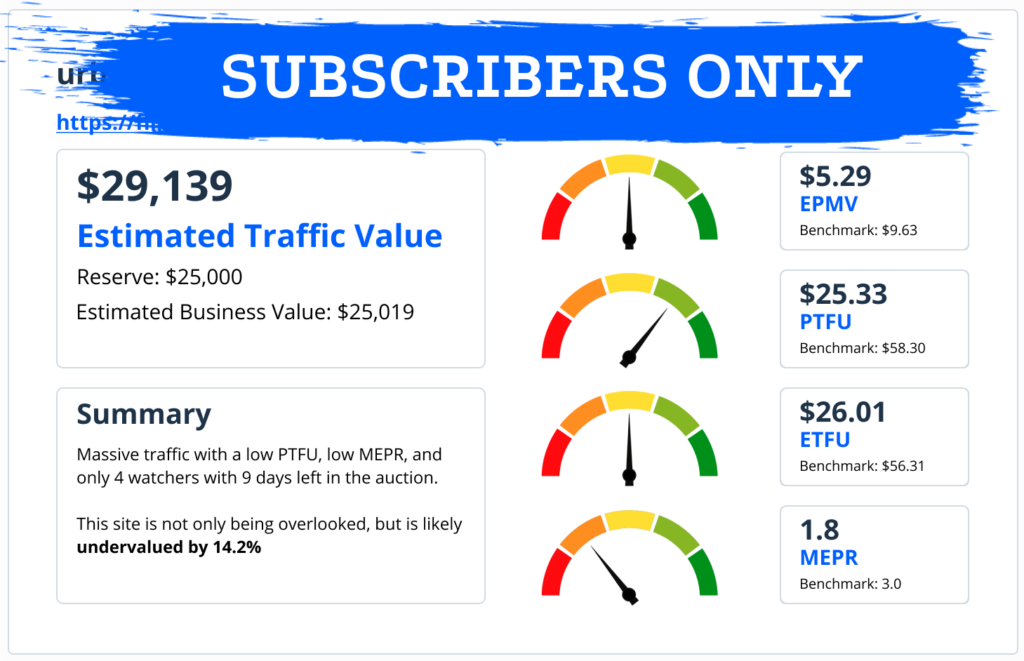Facebook has a troubled history with video. But it’s been building bridges.
Welcome to issue #16 of Alternative Assets by Stefan von Imhof. Each week I explore unique investment ideas, with a focus on digital assets.
I hope you enjoyed last week’s special issue about my first paid package, Traffic Advantage. As you know, this is a free newsletter and probably always will be. But it’s been a very exciting week as I introduced this package to you, and welcomed many new paid subscribers to the community.
I’m really pleased with the number of subscribers so far. Feedback has been great, and I’ve even set up live chats to answer questions and learn more.
This week’s issue is about creators earning revenue through Facebook videos.
Let’s dive in!

Table of Contents
Facebook’s troubled history with video
Facebook is the social media platform we love to hate. While it has connected us all together in new and truly amazing ways, it has also divided us along lines we barely knew existed.
Whatever you think about Facebook, one thing must be said: It’s still an incredibly massive platform. Just because you probably don’t hang out there as much anymore doesn’t mean it’s gone away. 1.7 billion people use Facebook every single day, and while engagement seems to be falling, it’s still levelling off at an insane 37 minutes per user per day.

Yet we haven’t really seen website owners, media companies, and big stars pump out content on Facebook the way we have with YouTube. And much of this has to do with Facebook’s troubled history with video.
In 2015, Facebook began its infamous “pivot to video” campaign. Using a massive PR push, they claimed videos on the platform were getting over a billion video views per day, in order to entice major publishers to come onboard and produce short-form video.
Their claims had huge impacts across the industry. Major publishers such as Buzzfeed and Mashable to shifted their entire content strategy and laid off hundreds of journalists in a desperate attempt to create videos instead of articles, and bend the knee at the altar of Facebook’s almighty algorithm.
As it turns out, Facebook vastly inflated their metrics (by between 60% and 80%!) for years. What they did was sneaky: they created a metric called the “Average Duration of Video Viewed,” which was meant to show publishers the average time users spent on each video in their feed.
But when calculating the metric, they only counted video views that were more than three seconds. Video views of under three seconds (i.e., video “bounces”) were not factored in at all! Since most people skip over videos while scrolling, this inflated the average tremendously.
Facebook later apologized for this shitty metric, saying it “should have reflected the total time spent watching a video divided by the total number of people who played it.” Yes… Yes it definitely should have.
So the big pivot was all for nothing. Publishers lost a ton of money making a big, expensive bet on the platform that never delivered. In addition to the wasted ad dollars, this fiasco led to a class-action lawsuit that Facebook ended up settling for $40 million. It’s no wonder publishers have lingering trust issues.
Sponsored
Want to supercharge a website before you start building?
ODYS is a fantastic new way to kickstart the site of your dreams with a pre-owned, brandable domain that’s relevant and full of link juice.
Think of it like building a new house on top of an existing foundation. You don’t have to dig. You don’t have to pour concrete. You don’t have to wait for permits. You can build your dream house on top of someone else’s abandoned efforts.
These aren’t just premium domains, they come with a backlink profile that can boost your site for years.
In fact, this is such a well-kept secret that they don’t just let anybody in. Your reference code is ‘AlternativeAssets’.
Is Facebook finally getting its act together?
So Facebook’s pivot to video didn’t quite work out. They alienated the community, and folks who were already not finding much success on the platform anyways, began treating Facebook as an afterthought compared to the much more lucrative YouTube & TikTok.
But could 2020 be the year things start to change?
Over the past few months, Facebook has been steadily improving their core video product, Facebook Watch. In May they launched new creator tools designed to make live-streaming easier, including automated closed-captions, access for logged-out users, and a Stars function, which allows creators to monetize their streams.
They also held a “Creator Day” in Malibu this past July, and launched a “Fan subscriptions” where viewers pay creators each month for exclusive content and other rewards. It’s similar to Patreon, except instead of a 12% cut, Facebook takes 30%. They’ve also made tighter integrations between Instagram and Facebook (both owned by Facebook, obviously), and have been luring top Youtubers to publish on the platform.
All this product improvement and wooing might be starting to pay off. At VidCon London last year, Jay Shetty claimed to be earning a million dollars per year through Facebook. Zuckerberg parroted him around as a success story — proof that investing your time into big blue is actually worth it.
What’s changed is that these rare, one-off examples seem to be more and more common lately. These past few months we’ve seen increasing chatter that Facebook seems to be getting its act together, and is becoming extremely profitable for some high-profile folks.
- Comedian @AdamW recently claimed the $1m/year figure as well. With 1.8 million followers, he has noticed his Facebook revenue going gangbusters lately, and recently published a video that garnered 103 million views.
- Another comedian, Daphnique Springs, says after years of slow growth she is suddenly getting around 1 to 1.5 million views per day from her Facebook vids.
- Kyle Khuns of XX Artists (don’t worry, the link is safe) mentioned his clients are making 5-6 figures a month through revenue from Facebook videos — mostly using repurposed YouTube content. It’s edited, titled, tagged, etc. differently, but it’s the same stuff.
Taylor Lorenz of the New York Times tweeted about this recently, and replies seem to confirm that something is happening.
Facebook revenue has been out of control for us lately
— David Pakman (@dpakman) October 31, 2020
On average CPMs (the price advertisers pay per 1,000 views) are still about 25% lower on Facebook than YouTube, and there are definitely still some lingering trust issues here. But there’s a lot less to be worried about when the algorithm is working in your favor. Lately, for whatever reason, that seems to be happening more and more.

YouTube is still king
Meanwhile, YouTube’s money-printing machine continues to hum along.
When it comes to earning money from video content, YouTube is definitely still top of mind for brands, websites, and solopreneurs (Is that…is that a real word? Chrome doesn’t think so, it’s giving me the squiggly red line. Eh, whatever.)
Over the years, YouTube has empowered and changed the lives of innumerable channel owners through their creator-friendly Partner Program. Although YouTube recently tightened the rules around creator monetization, it’s very easy to gain acceptance into the program. The biggest hurdle is probably hitting the 1,000 subscriber minimum — which isn’t too bad, but certainly takes some level of dedication.
Once you’re in, you can monetize your channel through a range of easy options, including regular advertising, subscriptions, donations/gifts, live-streaming, and YouTube Premium revenue. Ron Stefanski has outlined 13 ways to make money with YouTube, and YouTube directly helps you with about half of these.
A few months ago, YouTube started letting creators know exactly how much money they’re earning through the program, by introducing a sort of “net RPM” metric which shows your total revenue from all sources after YouTube takes their cut.
Creators: You can now see how much ? you make on YouTube relative to views you receive w/ RPM in YouTube Analytics.
— TeamYouTube (@TeamYouTube) July 9, 2020
RPM = total revenue earned per 1,000 views
Use it to track revenue performance & make more informed monetization strategy decisions → https://t.co/fxtdmawpJP pic.twitter.com/oSF81ITKgv
They also cut the minimum video length required to show mid-roll ads down to 8 minutes. Mid-rolls are those annoying but lucrative ads that pop up midway through the video you’re watching. (Note: This is why YouTube videos often have so much unnecessary filler. Creators use these time-wasting tactics to get them over the mid-roll ad hump.)
But features aside, YouTube videos have plenty of other advantages over Facebook videos. The SEO/traffic implications with YouTube videos are extremely significant. YouTube is much more compatible with the open web, as people can easily embed them in articles, link to them on social media, and promote them in newsletters. How would you embed a Facebook video?
Most importantly, YouTube videos are properly indexed on Google search. While the YouTube recommendation algorithm plays a major role in generating views for a video, publishers can at least have some outside influence on the video’s success. The success of Facebook videos, on the other hand, is almost entirely dependent on the Newsfeed algorithm.
Sponsored
Looking for a passive income source?
Has investing in digital assets has been on your mind, but you don’t know where to start?
Blackbook Investments has got you covered.
Get access to undervalued web properties and earn a much higher ROI compared to other asset classes. Whether you’re looking for a consistent income or big capital gains, website investing can help you achieve that.
With their personalized, comprehensive service and a vast network of buyers, sellers, and brokers, Blackbook Investments has been helping folks like you invest in websites for almost a decade.
Fill out their Investor Questionnaire and see if website investing is right for you.
Check out Blackbook Investments →
Repurposing videos for Facebook
So, should website owners with YouTube channels start publishing videos to Facebook right away? Well, it’s not that simple.
First, you need to qualify for monetization. This means having at least 10,000 page followers, and over 30,000 video views that last at least one minute. Facebook is reportedly much stricter than YouTube about what types of videos are allowed on the site, and routinely removes videos with little explanation as to why.
The next problem is the content itself. As mentioned above, Facebook videos don’t tend to have any filler at the beginning of the video. You need to get right to the point quickly, otherwise users will get bored and swipe right past it. (Or, as Facebook used to call it, a “view!” Har har har)
Then there’s the formatting. Even if you get the content right, you can’t just copy & paste your YouTube video over to Facebook. Watching videos on Facebook is very different than watching videos on YouTube, because Facebook is massively mobile. In fact, a whopping 96% of Facebook users access via a mobile device, compared with about 50% on YouTube. This means that in order to get the best experience & engagement, videos should be shot with a vertical orientation (9:16 aspect ratio), whereas on YouTube most videos are shot in 16:9 or 4:3.
But the biggest problem with making Facebook videos is the nature of the platform itself. Facebook is fundamentally sharing-centric. It’s driven by shares, comments, tags, and discussion. That’s how videos get seen. In fact, it’s basically the only way they get seen! Remember, unlike on YouTube, there’s no recommendation algorithm. No “related videos.” No “up next.” Nothing.
Because there’s no natural discovery mechanism, you’ll have to build an audience from scratch. Repurposing content is one thing, migrating fans is another. It’s all gotta be done manually.
Summary
For whatever reasons, creators are suddenly starting to see serious revenue from their videos on Facebook. It’s been a long time coming. While YouTube won’t get unseated as the leader anytime soon, the olive branches that Facebook has been lending to makers appear to be working.
Creating videos for Facebook and YouTube doesn’t have to be mutually exclusive. You can repurpose your existing content with some effort. But at the same time, remember it’s a completely different distribution channel, so don’t expect to just jump onto Facebook and start making bank.
Still, if the water is truly warm, expect a lot more creators, artists, and site owners to start diving back in the pool.
Traffic Advantage
Last Friday I sent out the first issue of Traffic Advantage, where I use Moneyball tactics to discover mispriced and undervalued websites.
Whether you’re just getting started in the world of website investing, or a seasoned vet looking for an unfair advantage, Traffic Advantage is designed to fast-forward your search for the right content site.
This week I discovered two well-oiled traffic machines, and a site undervalued by nearly 15%.
You’ll never look at website traffic the same way again. Read how it works, and get your 7-day free trial.
Other News
- Substack is now letting users use custom domains. This was a huge frustration for many users, and Medium recently enabled this feature as well. So it’s good to see Substack respond so quickly to customer feedback. This means writers don’t have to worry about Substack drinking their SEO milkshake. It also means my sneaky little content hack is no longer as necessary (though I’m still gonna do it.)
- The US Dept. of Justice has sued Google in what will likely be one of the biggest anti-trust fights of our lifetime. The Justice Department will likely urge Google split certain operations into separate companies, similar to how Reagan used the Sherman Anti-Trust Act to break up AT&T into one “primary” company and seven regional “Baby Bells.” Whatever happens, this will have tremendous implications for other tech giants — especially a certain monopsony retailer that is so powerful it actually might be affecting inflation itself.
That’s it for this week’s issue!
If you enjoyed reading this, please share it with someone who’d be interested.
Thank you for your shares and support. It means a lot to me!
See you next week,
– Stefan
How’d you like this week’s issue?
✅ That helped me, thanks
? Meh – was ok
❌ Not interesting to me
Sponsorship
Interested in becoming a sponsor? Let’s chat.
Each issue of Alternative Assets receives over 600 impressions, and two ad units are available per issue. Check rates and availability.















